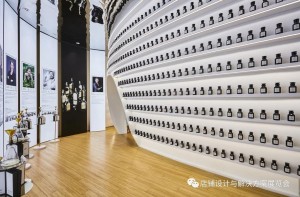Dec . 24, 2024 13:43 Back to list
Creative Strategies for Effective Merchandising Fixtures in Retail Environments
The Importance of Merchandising Fixtures in Retail
In the competitive world of retail, creating an engaging shopping experience is paramount to attracting customers and driving sales. One of the key elements in achieving this is the strategic use of merchandising fixtures. These fixtures are not merely functional displays; they play a crucial role in the overall marketing strategy of a store. This article delves into the significance of merchandising fixtures, their types, and their impact on consumer behavior.
What are Merchandising Fixtures?
Merchandising fixtures refer to the various tools and structures used in retail settings to display products efficiently and attractively. They come in various forms, including shelving units, display tables, racks, mannequins, and cash wraps. Each fixture serves a unique purpose, tailored to optimize the presentation of products and enhance the shopping experience.
Types of Merchandising Fixtures
1. Shelving Units Perhaps the most common type of fixture, shelving units are essential for displaying products in an organized manner. They allow for easy accessibility and can be customized to fit different store layouts.
2. Display Tables These fixtures are versatile and can be used for promotional items, seasonal products, or highlighting new arrivals. Display tables can attract customers’ attention and encourage impulse purchases.
3. Mannequins Especially popular in clothing stores, mannequins serve to showcase apparel and accessories. They help customers visualize how items can be styled, effectively driving interest and sales.
4. Racks Retail racks come in various styles and serve multiple purposes, from hanging clothes to displaying handbags. Efficient use of racks can enhance the flow of a store and improve the shopping experience.
5. End Caps Located at the end of aisles, end caps are prime real estate for merchandising. They often feature promotional items or new products, drawing customers' attention and increasing visibility.
The Impact of Merchandising Fixtures on Consumer Behavior
merchandising fixtures

The design and arrangement of merchandising fixtures significantly influence consumer behavior
. Here are a few ways in which they impact shopping habits1. Visual Appeal First impressions matter. Eye-catching displays created with well-designed fixtures can draw customers into a store and encourage them to explore further. This visual engagement is crucial in a marketplace filled with choices.
2. Product Accessibility Shelving and display units designed with customer convenience in mind can lead to easier product discovery. When customers can easily find what they are looking for, they are more likely to make a purchase.
3. Thematic Presentations Merchandising fixtures allow retailers to create thematic displays that resonate with consumers. Seasonal displays, for instance, can evoke emotions and memories, enticing customers to buy products that resonate with the occasion.
4. Encouraging Impulse Purchases Strategic placement of merchandising fixtures can lead to impulse buying. For example, placing small, frequently bought items near the checkout can encourage last-minute purchases.
5. Branding and Identity Fixtures can serve as a reflection of a brand’s identity. Unique and creative displays can communicate a brand’s values and personality, helping to establish a connection with customers.
The Future of Merchandising Fixtures
As retail continues to evolve, so do merchandising fixtures. With the rise of e-commerce, brick-and-mortar stores must adapt to attract foot traffic. The integration of technology, such as smart mirrors or interactive displays, is becoming increasingly common. These innovations not only enhance the shopping experience but also provide valuable data on customer preferences and behavior.
Conclusion
In conclusion, merchandising fixtures are a fundamental component of retail strategy, serving as both functional tools and marketing assets. By understanding their importance and effectively utilizing them, retailers can create memorable shopping experiences that drive customer loyalty and increase sales. As the retail landscape continues to change, the role of merchandising fixtures will undoubtedly adapt, yet their core purpose remains the same to connect customers with the products they need and desire.
-
Optimize Retail Displays With Advanced Rack Fitting For Shop
NewsAug.22,2025
-
Showcase Your Products Effectively With a Premium Portable Showcase
NewsAug.22,2025
-
Transform Your Retail Space With a Premium Shopfitting Store
NewsAug.22,2025
-
Transform Your Store With Premium Retail Shop Fittings
NewsAug.22,2025
-
Maximize Retail Display with Slatwall Solutions
NewsAug.22,2025
-
Shopfitting Shop — Creating Efficient and Attractive Retail Spaces
NewsAug.22,2025


















































































































